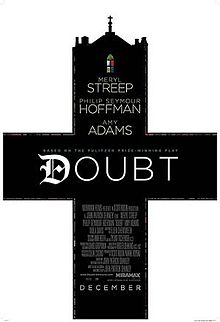How fitting it was for the Sh’ma editors to open this month’s edition with Shoshana Olidort’s piece, “On First Encountering Doubt.” Doubt seems to be one of several leitmotifs that weave through these articles.
While it may seem odd, what first comes to my mind is Pope Francis.
About a year ago, a papal interview was published in English in the journal America, the National Catholic Review. The main stream press focused on what appeared to be the Pope’s more humane approach to some of the hot-button social issues of our day. While grateful for the new sense of papal compassion, I was even more impressed by Francis’ understanding of the nature of the religious community and the divine/human relationship. Downplaying the doctrinal role of the Church, the pontiff proclaimed that divine truth is revealed in the sacred journey of discernment undertaken by the community of faith in concert with its clergy. According to this Pope, that communal journey is the source of the Church’s “infallibility.” It is the community’s ongoing journey of discernment that is infallible, not the Church.
But, for Pope Francis, there is another crucial dimension to this journey, namely, the element of doubt. Without the essential ingredient of doubt, everything is already known. There is no journey of discernment, since nothing more can be known. Thus, faith and doubt are not polar opposites, but work together to lead the faithful on their journey of discernment. But what exactly is this journey of discernment? As I understand it, it is a kind of dance of discernment, a divine/human symbiosis; it takes two to tango.
Religious humans gaze into the world and into the heavens, and are struck, in the words of Abraham Joshua Heschel, with “radical amazement.” We perceive a world of beauty, harmony, balance and order, and sense a divine consciousness filled with love and beneficence in granting us this wondrous cosmos. But what is also amazing, as Howard Smith indicates in “On Being New,” is that this same divine consciousness has endowed us with the consciousness to perceive and discern this cosmic beauty and order. Our ability to see and perceive, think and discern, “study and understand” is also a divine gift. It is, indeed, the divine within us, our being created in the divine image, our containing within us the divine breath as our life force.
This brings us to Rahab, a resident of Jericho’s “scarlet rope” district. Ronald Hendel calls her “a liminal figure, someone betwixt and between.” Despite the fact that Rahab lives on the threshold of different worlds, she proceeds to play a crucial role in God’s plan for the people of Israel, namely, the conquest and settlement of the land of Israel. It is precisely her liminal condition—her being in-between—that allows her to advance this divine plan.
Rahab’s role as a liminal character highlights for me another leitmotif that pervades the articles in this edition of Sh’ma. I become increasingly aware of a liminal, threshold, in-between realm where the divine cosmic consciousness and the divine human consciousness meet, and it is there—in that liminal realm—that kedusha, sanctity, emerges. This liminal space opens up in prayer, in ritual, in meditation or reflection, but, as several of these writers reveal, it also opens up in the many other liminal moments in our lives—the threshold between life and death, hope and suffering, faith and doubt, pregnancy and birth, the loss of virginity, “Rocky Horror” or otherwise. It is those liminal, in-between moments that help us to cross the threshold and bridge the gap between the divine consciousness within and the divine consciousness without—to enter the realm of the sacred and experience a true encounter with the divine.
email print
